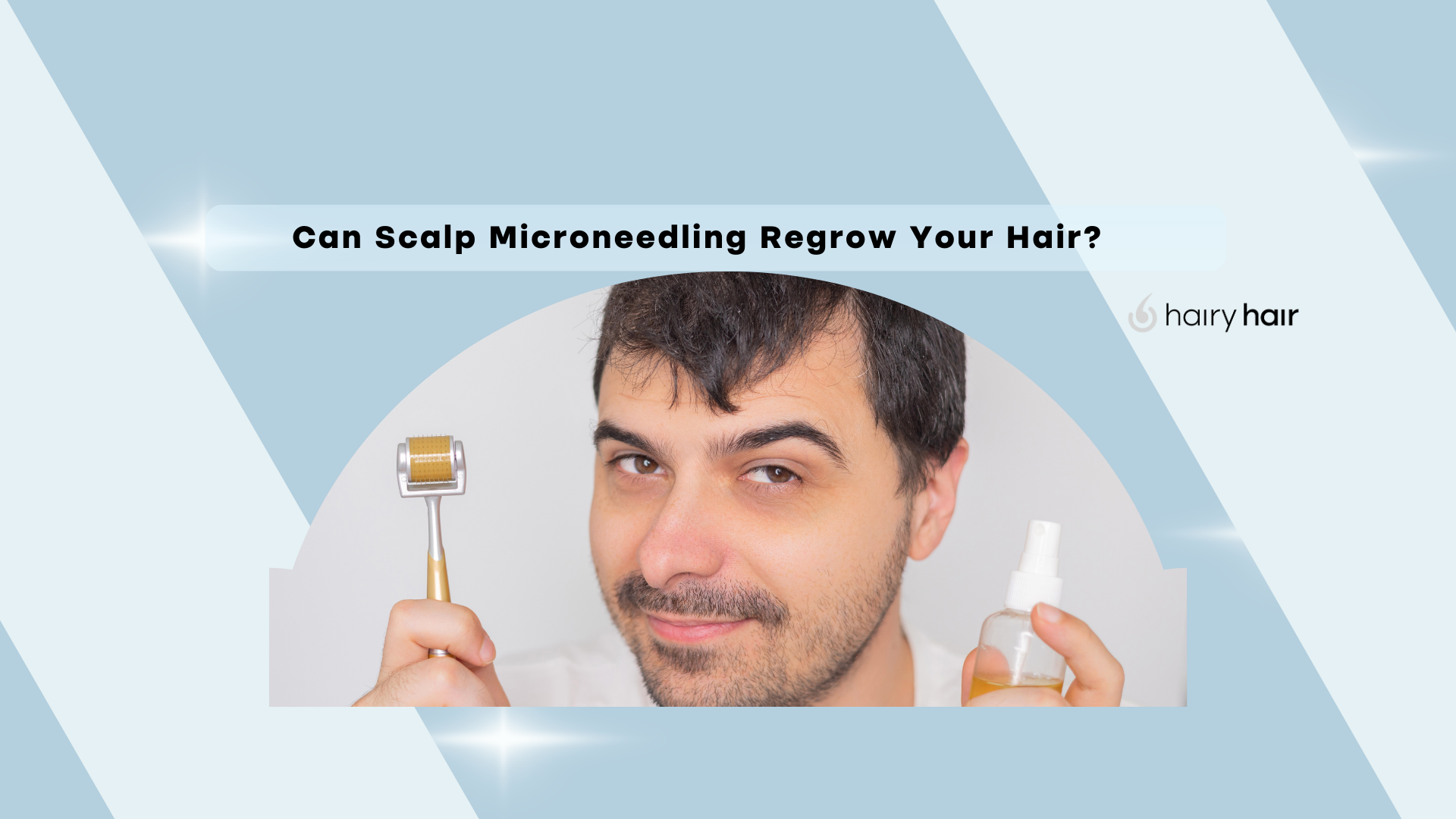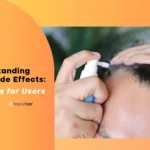Can Scalp Microneedling Regrow Your Hair?

Hair loss can be distressing for many people, leading them to search for various treatment solutions. If you’re struggling with hair thinning or balding, it might be worth considering scalp microneedling as a non-invasive option that often produces positive results. Research suggests that microneedling can support regrowth, but the effectiveness depends on various factors like the cause of hair loss and treatment frequency. In this article, we’ll discuss how scalp microneedling works to promote hair growth so you can decide whether it’s the right treatment option for you.
What is Scalp Microneedling?
Scalp microneedling is a hair loss treatment where a dermaroller with tiny needles is used to create micro-injuries on the scalp. This is believed to increase collagen production and stimulate the natural healing process, which encourages new hair growth by rejuvenating hair follicles. Microneedling isn’t just about creating these micro-injuries, it also leads to increased blood flow within the scalp and improves the absorption of topical hair loss treatments. Because of this, it’s an excellent complementary treatment alongside products like minoxidil and hair growth serums. The procedure is typically used to treat hair loss conditions like male pattern baldness, or androgenetic alopecia, but it can be used for a variety of hair loss causes.
How Does Scalp Microneedling Work?
The procedure is relatively simple, so much so that you can perform microneedling at home. However, it’s important to take precautions to reduce the risk of skin infections and other complications. You can do this by always using sterile equipment and being careful with pressure. It may be preferable to book a microneedling session with a trained professional to ensure safety and the best results. This is how it works:
- Preparing the Scalp: Before starting, the scalp is cleaned thoroughly. A numbing cream can be applied to ease any potential discomfort during the procedure.
- Microneedling: A dermaroller or microneedling pen is used to create controlled micro-injuries on the scalp. Needle length varies depending on the extent of hair loss and treatment area.
- Healing Process: The scalp starts healing from the micro-injuries, stimulating collagen production. This invigorates the hair follicles and encourages new growth.
- Post-treatment: The scalp may be slightly red after the procedure. If your microneedling session is with a healthcare provider, they will generally book a follow-up appointment to check your results.
Benefits of Scalp Microneedling
- Non-invasive – Scalp microneedling is non-invasive, so there’s no need for surgery or long recovery times.
- Minimal Side Effects – People don’t tend to experience side effects, although sometimes the scalp can be slightly red or tender for a day or two.
- Can Combine with Other Treatments – Microneedling can complement other hair loss treatments such as hair growth serums and minoxidil.
- Stimulates Natural Hair Growth – The procedure stimulates the body’s healing process, making it a natural way to promote hair growth.
Microneedling Limitations
- Not Effective for Everyone – Microneedling may not be effective for those with advanced hair loss or specific conditions.
- Multiple Sessions Needed – You’ll need to have several microneedling sessions over a few months if you want to see optimal results.
- Risk of Irritation/Infection – This is rare, but there is a small risk of infection or irritation if the scalp or dermaroller isn’t completely clean.
Research Supports Microneedling For Hair Loss
A growing body of research supports microneedling treatments for promoting hair growth. For example, a 2022 Journal of Cosmetic Dermatology review found that microneedling increased overall hair count in patients more than topical minoxidil. Combining both microneedling sessions and minoxidil increased the total hair count even more significantly than monotherapy with microneedling, suggesting that a dual approach is more effective. A 2023 Journal of Controlled Release study further supports this by stating that microneedles are more beneficial in treating androgenetic alopecia than standard medications, as they create targeted delivery of other treatments. From the research, we can see that microneedling can be even more effective when combined with supplementary treatments.
Supplementary Treatments For Hair Loss
Approved Medications
FDA-approved medications like minoxidil and finasteride are clinically proven to stimulate hair growth and can be combined with microneedling. Minoxidil is available over the counter as a topical solution or foam. It works by increasing blood flow to the hair follicles to promote growth. Finasteride is only available on prescription and it works to inhibit DHT, the hormone responsible for shrinking hair follicles. This helps to slow down hair loss and encourage new growth.
Low-Level Light Therapy (LLLT)
LLLT is a non-invasive treatment option that uses low-level lasers to stimulate the hair follicles. It boosts cellular activity and blood circulation in the scalp, encouraging dormant hair follicles to begin the growth phase. According to a 2020 study in the Expert Opinion on Biological Therapy journal, a significant increase in hair density was observed in patients combining microneedling and LLLT.
Hair Growth Serums
Hair growth serums contain active ingredients such as peptides and essential oils that boost scalp health and encourage natural hair growth. They are applied directly to the scalp and create the perfect environment for regrowth by hydrating the scalp and strengthening hair strands. Microneedling helps enhance the absorption of these products which increases their effectiveness.
Hair Growth Supplements
Hair growth supplements contain essential nutrients like biotin, vitamin D, and zinc, which are known to address deficiencies that can lead to hair loss. Supplements strengthen the hair follicles from within to promote thicker, healthier hair growth. If you’re looking for a hair growth solution that is clinically proven to combat thinning and promote long-lasting regrowth, the Hairy Hair treatment plan is an excellent option. It’s one daily pill, designed by qualified GPs, that targets the root cause of hair loss. The best part is, no clinic visits are required – simply sign up for a subscription and treatment will be sent straight to your door.
Final Thoughts
Microneedling is a promising, non-invasive treatment option for managing hair loss. A variety of studies support the use of microneedling treatments for promoting healthy hair regrowth, although it’s important to note that it may not work for everyone. Combining microneedling with supplementary treatments like approved medications and hair growth supplements can help you achieve optimal results. It might be worth trying various treatment options or consulting with a hair loss specialist who can help you find the most effective treatment for your individual needs.
In This Article
Overview
Most Trending Articles


